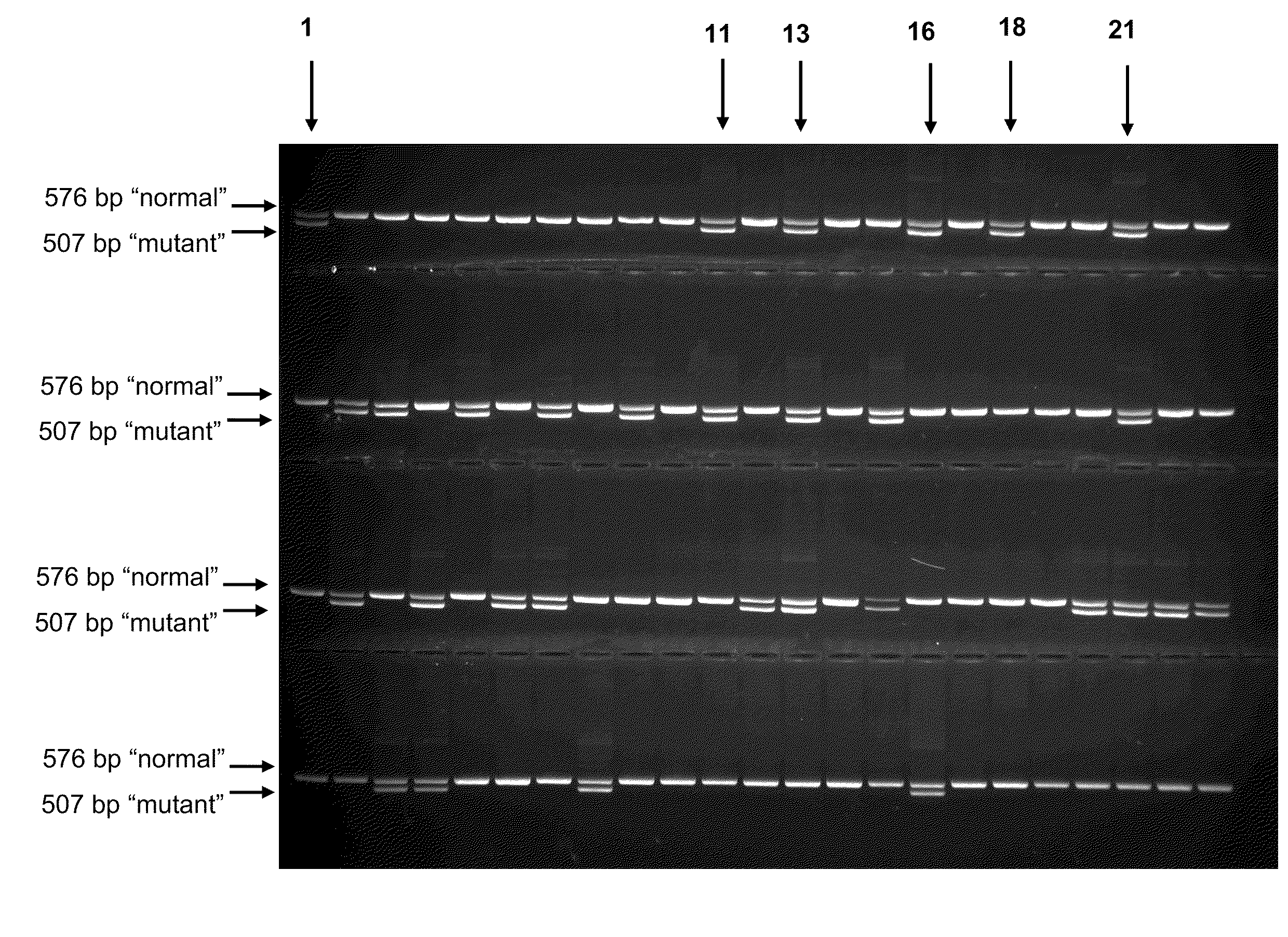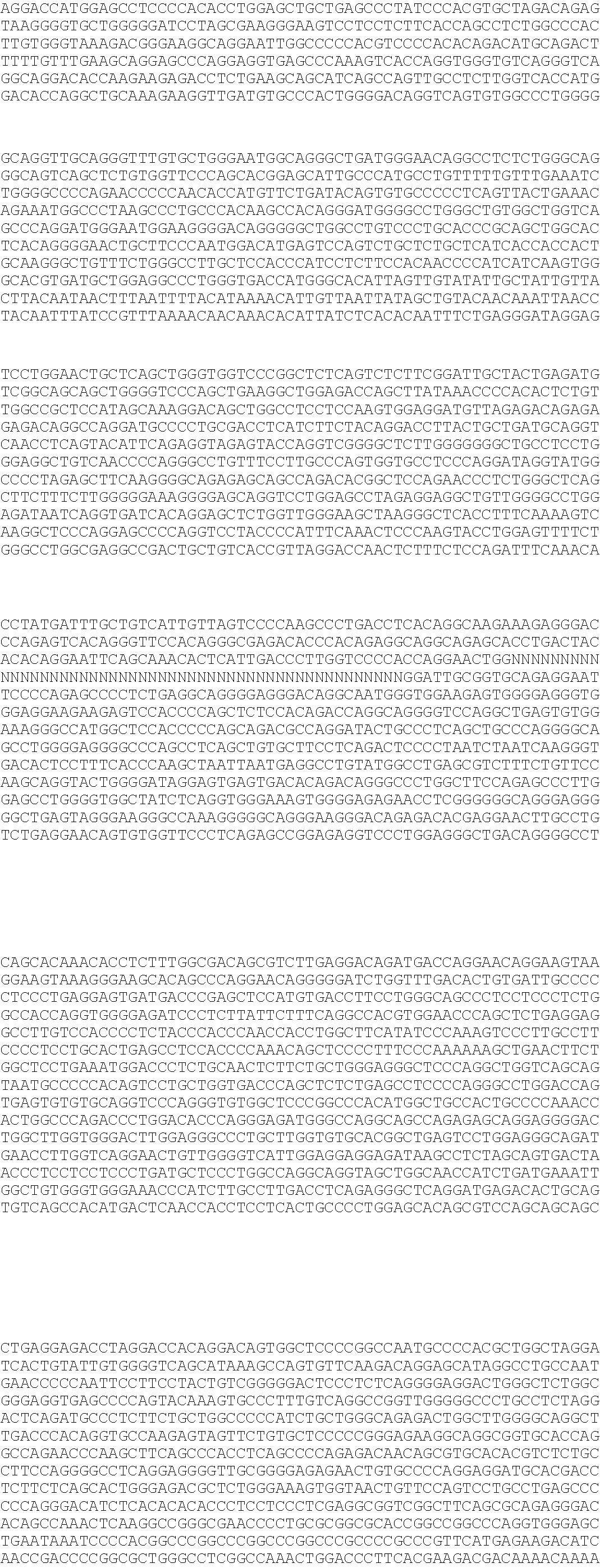Screening for Arthrogryposis Multiplex in Bovines
a technology of arthrogryposis and bovines, applied in the field of arthrogryposis multiplex in bovines, can solve problems such as loss of agrn function
- Summary
- Abstract
- Description
- Claims
- Application Information
AI Technical Summary
Benefits of technology
Problems solved by technology
Method used
Image
Examples
example 1
Characterization of the Genetic Basis of the Mutation
[0026]The accurate identification and subsequent selection against carriers of the AM mutation is the only method that can be used to eliminate this genetic defect from the population, without concurrent loss of genetic resources due to culling based only on pedigree. The development of a method to accurately and efficiently determine the genotype status of an individual is dependent on understanding the molecular basis of the defect (i.e., identification of the causative mutation within the DNA sequence). The mutation causing AM is identified as a deletion of about 23,363 base pairs. This deletion encompsses the 5′ regulatory region of the hairy and enhancer of split 4 (HES4) gene, the entirety of the ISG15 ubiquitin-like modifier (ISG15) gene, and the 5′ regulatory region and first two exons of the agrin (AGRN) gene. The role of HES4 and ISG15 in disease pathology is unclear, however based on the functional role of AGRN in devel...
example 2
DNA-Based Tests to Detect AM
[0051]Those of ordinary skill in the art will recognize that any number of DNA-based diagnostic tests can be developed that detect the presence or absence of a deletion on the order of greater than about 15,000 base pairs, or greater than about 20,000 base pairs, or about 23,363 base pairs (see, e.g., U.S. Pat. Pub. No. 20090239212). Given the length of the DNA sequence of SEQ ID NOs:1 and 2, the invention tolerates variation in both the precise breakpoint location and breakpoint sequence. For example, primers and probes can be designed so that the breakpoints (e.g., between bases 429-430 and bases 445-446 of SEQ ID NO:2) can vary, for example by plus or minus 20 base pairs, or plus or minus 10 base pairs, or plus or minus 5 base pairs or less, without affecting the ability of the probe or primer to specifically bind the target sequence and generate an output signal that can be used to determine the presence or absence of a deletion. One example of such d...
example 3
Assay Characterization
[0061]The first and second primers provided above (e.g., SEQ ID NOs:11,13) are each located on a separate side of the breakpoint. Accordingly, in a normal allele there is no amplification product attributed to the first (SEQ ID NO:11) and second (SEQ ID NO:13) primers as the intervening about 23 kb sequence between the first and second primers prevent generation of PCR-amplified DNA product. If there is, however, an allele for the AM disease (e.g., the intervening about 23 kb sequence is deleted), a first DNA product is amplified, wherein the DNA corresponds to the region encompassed by the first and second primers. The resultant length of this first DNA product is L12. Alternatively, the first (SEQ ID NO:11) and third (SEQ ID NO:15) primers may be used to generate a DNA amplified fragment having length L13 and indicating a normal allele. The third primer resides in the deleted portion, and so a DNA product is not amplified for those alleles carrying the AM mut...
PUM
| Property | Measurement | Unit |
|---|---|---|
| ionic strength | aaaaa | aaaaa |
| pH | aaaaa | aaaaa |
| pH | aaaaa | aaaaa |
Abstract
Description
Claims
Application Information
 Login to View More
Login to View More - R&D
- Intellectual Property
- Life Sciences
- Materials
- Tech Scout
- Unparalleled Data Quality
- Higher Quality Content
- 60% Fewer Hallucinations
Browse by: Latest US Patents, China's latest patents, Technical Efficacy Thesaurus, Application Domain, Technology Topic, Popular Technical Reports.
© 2025 PatSnap. All rights reserved.Legal|Privacy policy|Modern Slavery Act Transparency Statement|Sitemap|About US| Contact US: help@patsnap.com



